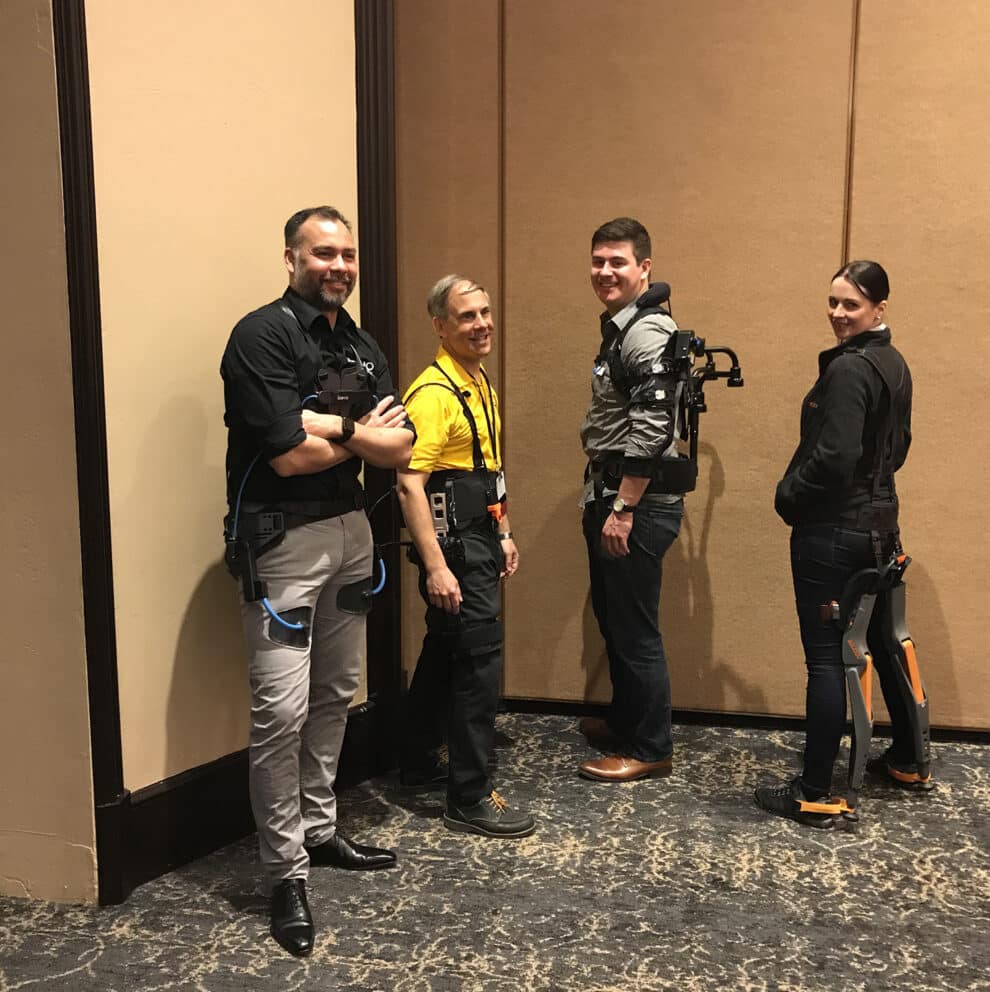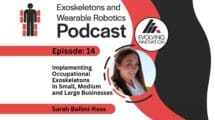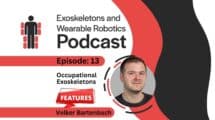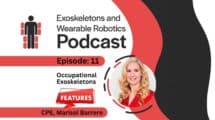Just two years ago, it would have been next to impossible to find a wearable exoskeleton on an automotive production line. In just a couple of years, the number of exoskeletons in auto plants has gone from a few dozen to somewhere close to a thousand, and this trend is showing no signs of slowing down.
The exact number of active and evaluation wearable device installs is not trivial to calculate, but some values are known. At the Wearable Robotics Association Conference (WearRAcon19) held in March 2019, it was revealed that between BMW, Ford, Honda, Nissan, Toyota, and Volkswagen there are 585 devices in use. In addition to the six companies listed above, there are at least a dozen auto manufacturers that are using or testing exoskeletons at this time.
One aspect that is facilitating the rapid spread of exoskeletons in the automotive industry is that ergonomist and manufacturing engineers at each site are allowed to communicate with each other. As a result, there is at least one automotive exoskeleton group currently active. In these groups, professionals from rival car producers are openly discussing their experience with exos. This combined knowledge is used to the benefit of manufacturing employees around the globe.
Shoulders and Back
What do the auto companies hope that these passive exoskeletons can achieve? For the most part, it is a long term reduction of injuries in the shoulders and spine. An easy way to think about this is that injury is not a single traumatic event. Instead, it is the slow accumulation of fatigue in the body with a single event that finally “breaks the camel’s back.” Fatigue buildup in the body occurs when the employee has less time to recover from daily tasks than it needs. Staying within the confines of auto production, it is when the wear-and-tear of the daily manufacturing shift outpaces the recovery time of the employee each day. Over time, fatigue builds up and the worker becomes more and more susceptible to an injury.
Another benefit from passive exoskeletons in car plants is the potential for reduction of workmanship errors. As the body begins to get tired during the workday it can lead to mental fatigue in addition to physical fatigue. The best-documented example of an exoskeleton decreasing workmanship error comes from the March 2019 issue of the Professional Safety Journal of The American Society of Safety Professionals. The journal reports on a study that shows an 86% improvement of high-quality welds for people with vs. without the Levitate Airframe, a passive shoulder support exoskeleton during a welding simulation. It is important to note that the welding simulator was never designed with an exoskeleton in mind, thus there was no inherent bias in the test procedure.
Car manufacturing plants are striving to create a safer work environment by reducing fatigue for specific tasks in the production line while also potentially reducing mental fatigue and workmanship error. They are using three types of passive (not powered) exoskeletons (a wearable device that performs physical work between body joints) to achieve this:
- shoulder support exoskeletons that support the arms while at or above chest level
- hip exoskeletons that provide back support while bending forward
- chairless-chairs that can lock into position while working at a low to the ground squatting position
It may not seem apparent at first, but automotive production lines are the perfect testing ground for exoskeletons! The production lines have short cycle times, a new car or truck needs to be finished every three to six minutes. Even with changing tasks every two hours, an employee will have many repetitions of the same motions during the day. This is a perfect environment for both industrial robots and wearable robots, such as exoskeletons, can shine.
Short cycle time is not the only condition that distinguishes a car plant from other industrial sites. Car lines are staffed with manufacturing engineers that can assist in the evaluation and proper application of exoskeletons. The lines present a closed, clean and controlled environment, especially compared to construction pads or shipyards.
This is not to say that exoskeletons have it easy in a car plant. After all, a completed unit needs to be rolled out every few minutes. A single exo strap coming loose during the workday that causes a delay by just a few minutes to adjust lead to thousands of dollars of lost production. Passive exoskeletons have the support and beneficial environment to thrive on the car production line but they also need to perform.
Most tasks that are easy to automate already use industrial robots. For the rest, the combination of the human eye, dexterity and decision making are still far more cost effective than the best robot and vision recognition system. Car plants require a human touch and will continue to do so for many decades to come. Passive exoskeletons hold the promise for manufacturing employees to retire injury free and in good health to enjoy the fruits of their labor during their twilight years.
This article was originally published on Forbes.com Industry – Manufacturing on May 15th, 2019.








Nice Post! thanks for the share..